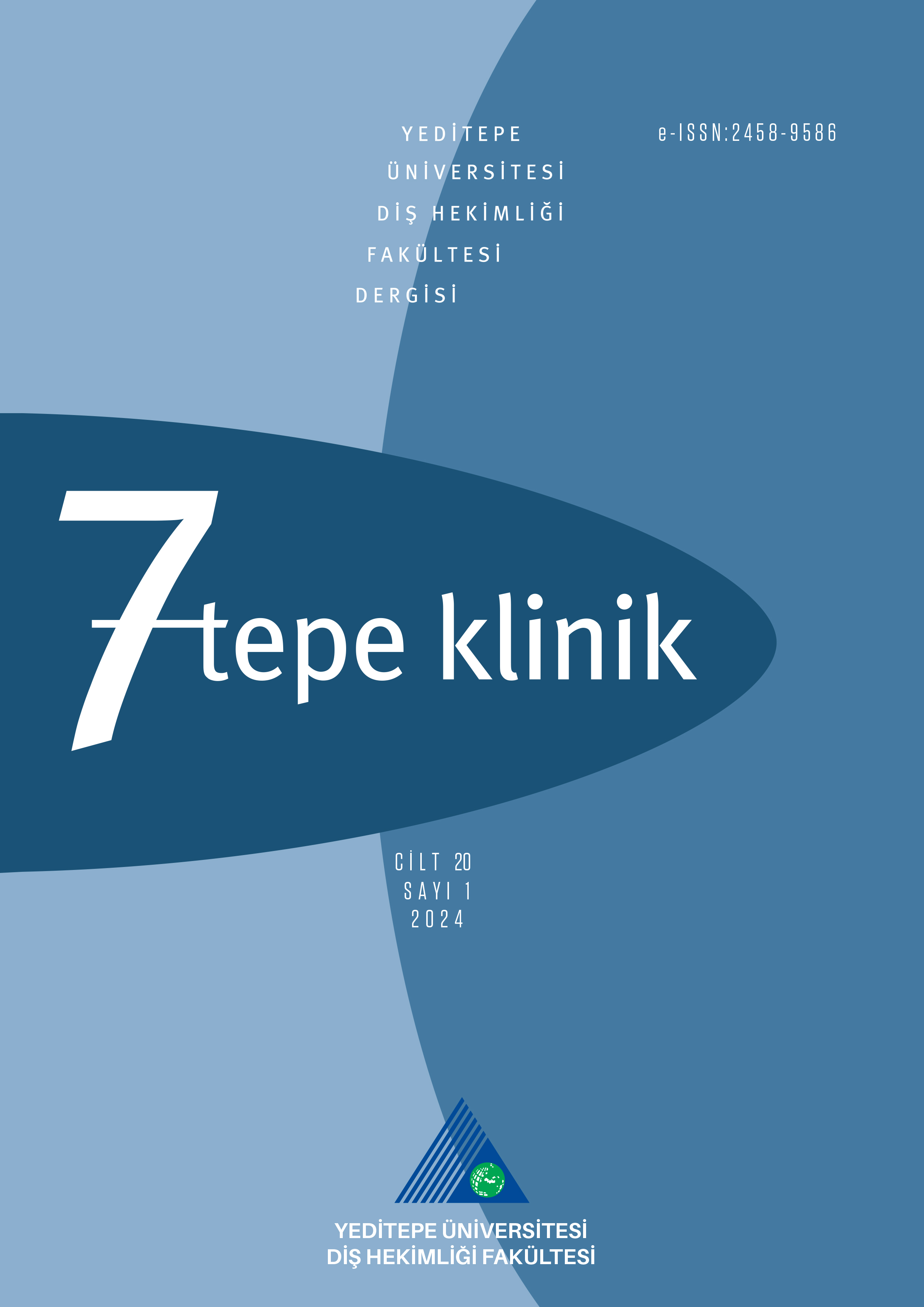Odontojen kistlerde yağ bezi lobulüsü
Nihan Aksakallıİstanbul Üniversitesi, Onkoloji Enstitüsü, Tümör Patolojisi Bilim Dalı, İstanbul, TurkeyGİRİŞ ve AMAÇ: Dermoid kistlerde bulunan yağ bezi lobulüsü odontojen kistlerde enderdir. Dermoid kistler yavaş büyür ve biyolojik davranışları sesizdir, kist çıkartıldıktan sonra yerel yineleme görülmez. Oysaki bazı gelişimsel odontojen kistler lokal agresif bir klinik gidiş gösterir, yerel yineleme oranları yüksektir; bu tip kistlerde yağ bezi lobülüsü bulunabilir. Bu çalışmanın amacı yağ bezi lobülüsü içeren odontojen kistlerin klinik ve histopatolojik olarak incelenmesidir.
YÖNTEM ve GEREÇLER: Çalışmada yağ bezi lobulüsü içeren 14 odontojen kist olgusunun histopatolojik özellikleri, yağ bezi lobulüslerinin sayısı ve yerleşim özellikleri dikkate alınarak incelendi. Histokimyasal (PAS) ve immunhistokimyasal (S100 proteini, Pan Sitokeratin, Sitokeratin 19 and EMA ) incelemeleri de yapıldı.
BULGULAR: Çalışmada 14 olgu incelendi, bunların 9u erkek (%64), 5i (%36) kadındı. 14 odontojen kist olgusunun, 10u mandibulada, 4ü maksillada bulunuyordu. Lezyonların hepsi gelişimsel odontojen kistti. Mikroskopik incelemede 11 olguda yağ bezi lobulusü yalnızca fibrotik kist duvarında, 1inde yağ bezi lobulüsü epitel içinde yer almıştı, 2sinde ise hem epitel içinde, hem epitelin hemen altında, hem de fibrotik duvarda izlendi.
TARTIŞMA ve SONUÇ: Bir kistte histopatolojik olarak yağ bezi lobulüsü görüldüğünde dermoid kist tanısı koyulması eğilimi vardır. Bu nedenle ayırıcı tanıya yağ bezi lobulüsü içeren odontojen kistlerin alınması hasta yönetimi ve farklı izlem seçenekleri açısından oldukça önemlidir.
Sebaceous glands within odontogenic cysts
Nihan AksakallıIstanbul University, Institute of Oncology, Department of Tumour Pathology, Istanbul, TurkeyINTRODUCTION: Sebaceous glands are rarely observed in odontogenic cysts whereas these structures are the histopathologic features of dermoid cysts. Dermoid cyst growth is slow and its biologic behaviour is silent; after the cyst is removed, recurrence is not observed. However, there are some developmental odontogenic cysts that have a local aggressive course and high levels of recurrence and sebaceous glands may present in these types of cyst. The aim of the study is to evaluate the histopathologic and clinical features of odontogenic cyst with sebaceous gland.
METHODS: 14 odontogenic cysts with sebaceous glands were reported in the present study. Histopathological features, locations and numbers of sebaceous glands were evaluated. Histochemical (PAS) and immunohistochemical (S100 protein, Pan Cytokeratin, Cytokeratin 19 and EMA ) examinations were also performed.
RESULTS: In the present study, 14 patients, 9 (64%) male and 5 (36%) female with a mean age of 42 years were included. The cysts were located in the mandible of 10; while four of them were in the maxilla. All lesions were developmental odontogenic cysts. Microscopic evaluation revealed that sebaceous glands were only in the fibrotic cyst wall in 11 cases, in the intraepithelial location in 1 case and 2 cases showed three different sites as intraepithelial, subepithelial and wall.
DISCUSSION AND CONCLUSION: When the sebaceous glands are observed histopathologically, there is a tendency to diagnoisis as a dermoid cyst. Therefore, the differential diagnosis between odontogenic cyst with sebaceous glands and intraosseous dermoid cysts has great importance for management or different follow-up options.
Sorumlu Yazar: Nihan Aksakallı, Türkiye
Makale Dili: İngilizce



